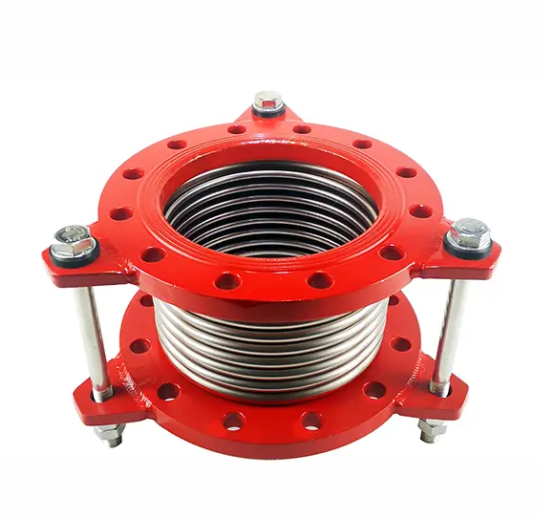Flexible Joint technology plays a crucial role in modern industry, enhancing both performance and reliability. These components allow systems to accommodate movement and thermal expansion, which are essential for maintaining operational integrity. Flexible Joints have evolved significantly since their initial industry acceptance in the 1990s. They now tackle more challenging applications, such as decoupling agents between steel catenary risers and floating platforms. By absorbing vibrations and compensating for misalignment, Flexible Joints ensure seamless operation across various industrial settings. Their ability to adapt to dynamic conditions makes them indispensable in maintaining system efficiency and longevity.
Types of Flexible Joints
Flexible joints serve as crucial components in various industrial applications, providing the necessary adaptability to accommodate movement and thermal expansion. Understanding the different types of flexible joints helps in selecting the right one for specific needs.
Metal Expansion Joints
Metal expansion joints excel in high-temperature, high-pressure, and corrosive environments. They offer durability and longevity, making them suitable for demanding industrial settings. These joints are designed to absorb thermal expansion, vibration, and movement within piping systems. Their robust construction ensures operational efficiency in industries such as oil and gas, where they accommodate movement and vibration in pipelines. Metal expansion joints play a vital role in maintaining the structural integrity of complex systems.
Flexible joints, whether rubber, flanged, or metal, provide essential solutions for various industrial challenges. By understanding their unique features and applications, industries can enhance system performance and reliability.
Uses and Benefits of Flexible Joints
Flexible Joint technology offers numerous advantages across various industrial applications. These joints enhance system performance by accommodating movement and reducing stress on components. Understanding their uses and benefits helps industries optimize their operations.
Absorbing Vibrations
Flexible Joints play a crucial role in absorbing vibrations within industrial systems. Vibrations can cause wear and tear on equipment, leading to costly repairs and downtime. By incorporating Flexible Joints, industries can mitigate these vibrations, ensuring smoother operation and extending the lifespan of machinery. Rubber expansion joints, for instance, excel in absorbing axial, lateral, and angular movements, providing superior flexibility compared to metal counterparts. This capability makes them indispensable in environments where vibration isolation is critical.
Accommodating Misalignment
Misalignment in piping systems can lead to leaks and system failures. Flexible Joints offer a solution by accommodating misalignment, ensuring secure connections between components. Unlike rigid couplings, which prioritize rigidity, Flexible Joints provide the necessary adaptability to maintain system integrity. This feature proves essential in applications where precise alignment is challenging, such as in HVAC systems and chemical plants. By allowing for slight deviations, Flexible Joints prevent undue stress on pipes and fittings, enhancing overall reliability.
Reducing Maintenance Costs
Industries constantly seek ways to reduce maintenance costs and improve efficiency. Flexible Joints contribute significantly to this goal by minimizing the need for frequent repairs and replacements. Their ability to absorb vibrations and accommodate misalignment reduces wear on system components, leading to fewer breakdowns. Additionally, Flexible Joints help manage thermal expansion, preventing damage caused by temperature fluctuations. This proactive approach to maintenance not only lowers costs but also ensures uninterrupted operations, making Flexible Joints a cost-effective choice for many industries.
Industry Applications
Flexible Joint technology finds extensive applications across various industries, enhancing system performance and reliability. These joints provide essential solutions for accommodating movement, reducing stress, and ensuring operational efficiency.
HVAC Systems
In HVAC systems, Flexible Joints play a crucial role in maintaining the integrity of ductwork and piping. They absorb vibrations and accommodate thermal expansion, which is vital for preventing damage and ensuring efficient operation. By allowing for movement and misalignment, these joints help maintain a stable and quiet environment. The use of rubber expansion joints in HVAC systems is particularly beneficial due to their ability to isolate vibrations and reduce noise levels.
Chemical Plants
Chemical plants rely heavily on Flexible Joints to manage the challenges posed by thermal expansion and contraction. These joints ensure the integrity of piping systems by accommodating movement and preventing leaks. In such environments, the ability to withstand high temperatures and corrosive substances is crucial. Metal expansion joints, known for their durability and resistance to harsh conditions, are often employed in chemical plants to maintain system reliability and safety.
Selecting the Right Flexible Joint
Selecting the appropriate Flexible Joint for an industrial application requires careful consideration of several factors. The right choice ensures optimal performance and longevity of the system. Two critical aspects to evaluate are material compatibility and temperature and pressure ratings.
Choosing the right Flexible Joint involves understanding the application’s unique requirements. By focusing on material compatibility and temperature and pressure ratings, industries can ensure that their systems operate efficiently and safely. This careful selection process not only extends the lifespan of the Flexible Joint but also contributes to the overall success of industrial operations.
Flexible Joint technology stands as a cornerstone in industrial applications, offering solutions that enhance system performance and reliability. The blog explored various types of Flexible Joints, such as rubber, flanged, and metal expansion joints, each serving unique purposes. These joints absorb vibrations, accommodate misalignment, and reduce maintenance costs, proving indispensable across industries like HVAC, chemical plants, and food processing. Selecting the right Flexible Joint involves assessing material compatibility and temperature and pressure ratings, ensuring optimal performance. Overall, Flexible Joints provide essential adaptability, maintaining operational integrity and safety in diverse industrial settings.
Post time: Nov-14-2024

